Atlantic Monthly Contributors's Blog, page 406
June 24, 2015
The 2016 U.S. Presidential Race: A Cheat Sheet
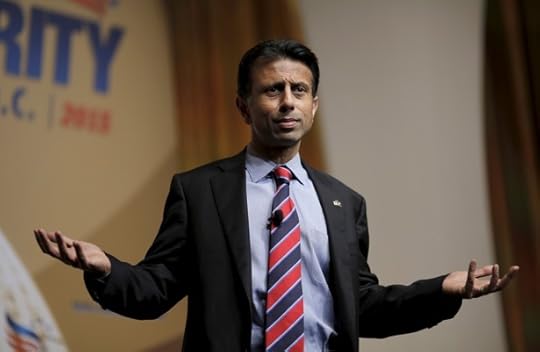
Usually, a campaign launch is an opportunity for get-to-know-the-candidate coverage. The obituaries wait until he or she ends a campaign or loses. With Bobby Jindal, it’s just the opposite: Reporters have greeted his entry into the Republican contest with elegies to his political potential.
Maybe that’s not so bad—he’s got nowhere to go but up, and longtime Jindal observers say his political skills shouldn’t be underestimated. Yet it’s amazing how quickly Jindal has gone from rising Republican star to afterthought. Jindal seemed to have it all: He was a Rhodes Scholar, a wonk and a technocrat; he had strong social-conservative credentials and a powerful story of conversion to Christianity; and in a party worried about diversity, he wasn’t just another aging white man.
Be skeptical of anyone who tells you a single moment was a turning point in anyone’s political career, but Jindal’s widely panned rebuttal to President Obama’s first State of the Union address does seem to have been his high-water mark. Since then, he’s been eclipsed by other young Republicans, like Ted Cruz and Marco Rubio and Rand Paul, who seem to have more political polish or more visceral appeal. His increasingly strained attempt to run a me-too campaign—announcing, without anyone asking, that he agreed with Rudy Giuliani that Obama doesn’t love America; ostentatiously taking up a “religious-freedom” law in Louisiana as other Republican governors backed away—has done nothing for his national popularity, and he currently stands 15th of 15 candidates in RealClearPolitics’s polling average, not even close to qualifying for the first GOP debates in the fall.
At the same time, Jindal’s popularity at home has taken a nosedive. The Bayou State’s budget is in tatters (hardly what a would-be wonk wants on his resume), and Jindal’s fellow Republicans have openly bashed him for cutting revenue without equivalent cuts in spending. His approval rate barely cracks 30 percent in Louisiana (he does much better in New Hampshire). Maybe he would have been better off running in 2012, but as is, he’s slated to announce his run at 5 p.m. EDT on Wednesday.
Jindal’s struggles mirror those of Chris Christie, another great future hope of the Republican Party who’s now widely viewed as fading. He also faces serious problems in his home state of New Jersey and a 30 percent approval rating. But Christie, too, seems headed for a presidential run, and Politico reports he could declare as soon as next week.
With so many candidates in the mix—some announced, some soon to announce, and some still on the fence—it’s tough to keep track of it all. To help out with that, this cheat sheet on the state of the presidential field will be periodically updated throughout the campaign season. Here's how things look right now.
* * *
The Republicans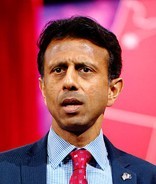 Gage Skidmore
Gage Skidmore Bobby Jindal
Who is he? A former Rhodes Scholar, he’s the outgoing governor of Louisiana. He previously served in the U.S. House.
Is he running? He is expected to make his run official on Wednesday.
Who wants him to run? It’s hard to say. Jindal has assiduously courted conservative Christians, both with a powerful conversion story (he was raised Hindu but converted to Catholicism in high school) and policies (after other governors reversed course, he charged forward with a religious-freedom law). But he still trails other social conservatives like Ted Cruz and Mike Huckabee.
Can he win the nomination? Probably not. Jindal still lacks traction at the national level, he faces an overcrowded field of social conservatives, and his stewardship of the state of Louisiana has come in for harsh criticism even from staunch fiscal conservatives. It’s hard to see how he gains momentum from here.
What else do we know? In 1994, he wrote an article called “Physical Dimensions of Spiritual Warfare,” in which he described a friend’s apparent exorcism.
Does his website have a good 404 page? Meh. Good joke, but past its expiration date.
 Gage Skidmore
Gage Skidmore Donald Trump
Who is he? The real-estate developer and reality-TV star almost certainly isn’t worth as much as he wants you to think he is.
Is he running? Like, for real? Of course not. He declared on June 16 and, incredibly, he has filed with the FEC, but the question to watch is what happens when he has to file financial disclosures.
Who wants him to run? Jon Stewart; Donald Trump.
Can he win the nomination?

What else do we know? I’m deeply ashamed and upset that I had to fill out this entry.
 Gage Skidmore
Gage Skidmore Jeb Bush
Who is he? The brother and son of presidents, he served two terms as governor of Florida, from 1999 to 2007.
Is he running? Yes, as of June 15.
Who wants him to run? Establishment Republicans; George W. Bush; major Wall Street donors.
Can he win the nomination? No one really knows. Since jumping into the race, he has continued to poll well and raise lots of money. He seems like a lock to rack up all-important endorsements from top Republicans. But predictions that he would quickly come to dominate the field have not come to pass, and while many analysts predicted that his moderate record would cause trouble in Iowa and with grassroots activists, that problem seems to be deeper than expected. His poll numbers are probably helped by his name, which is a double-edged sword.
What else do we know? Since Bush's surprise announcement, he has tended to stay fairly quiet, delivering some big speeches and hitting fundraisers, but not making a great number of trips to Iowa or New Hampshire.
Does his website have a good 404 page? Yes—y en español también.
 Gage Skidmore
Gage Skidmore Rick Perry
Who is he? George W. Bush’s successor as governor of Texas, he entered the 2012 race with high expectations, but sputtered out quickly. He left office in 2014 as the Lone Star State’s longest-serving governor.
Is he running? Yes. He announced on June 4.
Who wants him to run? Small-government conservatives; Texans; immigration hardliners; foreign-policy hawks. Noah Rothman makes a case here. (Perry's top backer four years ago, non-relative Bob Perry, died in 2013.)
Can he win the nomination? Maybe, but who knows? Perry and his backers insist 2016 Perry will be the straight shooter who oversaw the so-called Texas miracle, not the meandering, spacey Perry of 2012. We'll see. Perry has also made a point of quietly spending lots of time in Iowa, a strategy he didn’t use in 2012—but which Rick Santorum used very successfully.
Does his website have a good 404 page? That depends. Is this an “oops” joke? If so, yes.
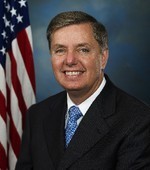 Wikimedia
Wikimedia Lindsey Graham
Who is he? A senator from South Carolina, he’s John McCain’s closest ally in the small caucus of Republicans who are moderate on many issues but very hawkish on foreign policy.
Is he running? He sure is. Graham kicked off the campaign June 1.
Who wants him to run? John McCain, naturally. Senator Kelly Ayotte, possibly. Joe Lieberman, maybe?
Can he win the nomination? Not really. The South Carolina senator seems to be running in large part to make sure there’s a credible, hawkish voice in the primary. It seems like Graham started his campaign almost as a lark but has started to enjoy the ride, plus he’s shown he’s a great performer on the stump. Molly Ball explores his chances at greater length here.
What else do we know? Graham promises to have a rotating first lady if he wins. We nominate Lana del Ray.
 Michael Vadon
Michael Vadon George Pataki
Who is he? Pataki ousted incumbent Mario Cuomo in 1994 and served three terms as governor of New York.
Is he running? Yes. He announced May 28.
Who wants him to run? It's not clear. Establishment Northeastern Republicans once held significant sway over the party, but those days have long since passed.
Can he win the nomination? No. As my colleague Russell Berman previously noted, Pataki is one of the longest of the long-shot GOP candidates. He has touted his leadership on 9/11, when he served as governor, but so did former New York City Mayor Rudy Giuliani. He was also a successful conservative governor in a deep-blue Northeastern state, but so was former Massachusetts Governor Mitt Romney. He seems be socially liberal enough to alienate primary voters, but not enough to capture Democrats.
Does his website have a good 404 page? No.
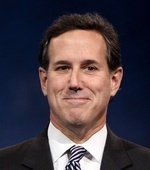 Gage Skidmore
Gage Skidmore Rick Santorum
Who is he? Santorum represented Pennsylvania in the Senate from 1995 until his defeat in 2006. He was the runner-up for the GOP nomination in 2012.
Is he running? Yes, with a formal announcement on May 27.
Who wants him to run? Social conservatives. The former Pennsylvania senator didn't have an obvious constituency in 2012, yet he still went a long way, and Foster Friess, who bankrolled much of Santorum's campaign then, is ready for another round.
Can he win the nomination? It's tough to imagine. Santorum himself said his chances would hinge on avoiding saying "crazy stuff that doesn't have anything to do with anything." For now, his poll numbers remain in the basement.
Does his website have a good 404 page? No.
 Gage Skidmore
Gage Skidmore Mike Huckabee
Who is he? An ordained preacher, former governor of Arkansas, and Fox News host, he ran a strong campaign in 2008, finishing third, but sat out 2012.
Is he running? Yes. He kicked off the campaign May 5.
Who wants him to run? Social conservatives; evangelical Christians.
Can he win the nomination? Huckabee's struggle will be to prove that he's still relevant. Since he last ran in 2008, a new breed of social conservatives has come in, and he'll have to compete with candidates like Ted Cruz. His brand of moral crusading feels a bit out of date in an era of widespread gay marriage—not least when he curiously chose to attack Beyoncé. (His statements in support of Josh Duggar have also earned him criticism and quizzical reaction.) He faces fire from strict anti-tax conservative groups for tax hikes while he was governor. And fundraising has always been his weak suit. But Huckabee's combination of affable demeanor and strong conservatism resonates with voters.
Does his website have a good 404 page? It’s pretty good.
 Gage Skidmore
Gage Skidmore Ben Carson
Who is he? A celebrated former head of pediatric neurosurgery at Johns Hopkins, Carson became a conservative folk hero after a broadside against Obamacare at the 2013 National Prayer Breakfast.
Is he running? Yes, after a May 4 announcement.
Who wants him to run? Grassroots conservatives, who have boosted him up near the top of polls, even as Republican insiders cringe. Carson has an incredibly appealing personal story—a voyage from poverty to pathbreaking neurosurgery—and none of the taint of politics.
Can he win the nomination? Almost certainly not. Carson's politics are conservative on some issues, but so eclectic as to be nearly incoherent overall. He's never run a political campaign, and has a tendency to do things like compare ISIS to the Founding Fathers. Despite initially building a formidable organization, he’s struggled to keep it together, with a rash of top staffers defecting.
Does his website have a good 404 page? No.
 Gage Skidmore
Gage Skidmore Carly Fiorina
Who is she? Fiorina rose through the ranks to become CEO of Hewlett-Packard from 1999 to 2005, before being ousted in an acrimonious struggle. She advised John McCain’s 2008 presidential campaign and unsuccessfully challenged Senator Barbara Boxer of California in 2010.
Is she running? Yes, as of a May 4 announcement.
Who wants her to run? It isn’t clear what Fiorina’s constituency is. She’s a former CEO of Hewlett-Packard, but there are other business-friendly candidates in the race, all of whom have more electoral experience.
Can she win the nomination? Almost certainly not. Fiorina’s only previously political experience was a failed Senate campaign against Barbara Boxer in 2010. She has mostly been serving the role of harasser in the race so far, stirring up the news with slams on environmentalists for causing droughts (your guess is as good as mine), Obama for backing net neutrality, and Apple’s Tim Cook for speaking out on Indiana’s Religious Freedom Restoration Act. Mainly, though, she has strongly criticized Hillary Clinton, and some Republican strategists like the optics of having a woman to criticize Clinton so as to sidestep charges of sexism. Fiorina seems to be wowing voters in Iowa, but that hasn’t translated into national support—yet.
What else do we know? Fiorina's 2010 Senate race produced two of the most entertaining and wacky political ads ever, "Demon Sheep" and the nearly eight-minute epic commonly known as "The Boxer Blimp."
Does her website have a good 404 page? No.
 Wikimedia
Wikimedia Marco Rubio
Who is he? A second-generation Cuban-American and former speaker of the Florida House, Rubio was catapulted to national fame in the 2010 Senate election, after he unexpected upset Governor Charlie Crist to win the GOP nomination.
Is he running? Yes—he announced on April 13.
Who wants him to run? Rubio enjoys establishment support, and has sought to position himself as the candidate of an interventionist foreign policy.
Could he win the nomination? Charles Krauthammer pegs him as the Republican frontrunner. His best hope seems to be to emerge as a consensus candidate who can appeal to social conservatives and hawks, and he's even sounded some libertarian notes of late. He's well-liked by Republicans, and has surged forward since announcing, but he needs to move up from second choice to first choice for more of them. Rubio seems to scare Democrats more than any other candidate, too.
Does his website have a good 404 page? It’s decent.
 Wikimedia
Wikimedia Rand Paul
Who is he? An ophthalmologist and son of libertarian icon Ron Paul, he rode the 2010 Republican wave to the Senate, representing Kentucky.
Is he running? Yes, as of April 7.
Who wants him to run? Ron Paul fans; Tea Partiers; libertarians; civil libertarians; non-interventionist Republicans.
Can he win the nomination? That depends who you ask. The Kentucky senator would be an unorthodox pick, with many positions outside his party's mainstream. He's relatively permissive on drugs, passionate about civil liberties, and adamantly for restraint on foreign policy. But Paul has worked hard to firm up establishment ties since reaching the Senate, and he has recently worked to paper over his differences with GOP’s hawkish wing, calling for a declaration of war against ISIS and generally saber-rattling. He is positioning himself as a candidate with crossover appeal in the general election, and his announcement email mocked the idea that only an establishment candidate can win a general election.
What else do we know? One of Paul's greatest strengths is the base bequeathed to him by his father, three-time presidential candidate and former Representative Ron Paul. But as The Washington Post has reported, his father is also Senator Paul's biggest headache.
Does his website have a good 404 page? No.
 Wikimedia
Wikimedia Ted Cruz
Who is he? Cruz served as deputy assistant attorney general in the George W. Bush administration and was appointed Texas solicitor general in 2003. In 2012, he ran an insurgent campaign to beat a heavily favored establishment Republican for Senate.
Is he running? Yes. He launched his campaign March 23 at Liberty University in Virginia.
Who wants him to run? Hardcore conservatives; Tea Partiers who worry that Rand Paul is too dovish on foreign policy; social conservatives.
Can he win the nomination? Though his announcement gave Cruz both a monetary and visibility boost, he still starts with some serious weaknesses. Much of Cruz's appeal to his supporters—his outspoken stances and his willingness to thumb his nose at his own party—also imperil him in a primary or general election, and he's sometimes been is own worst enemy when it comes to strategy. But Cruz is familiar with running and winning as an underdog.
Does his website have a good 404 page? No.
 David Shankbone
David Shankbone Chris Christie
Who is he? What’s it to you, buddy? The combative New Jerseyan is in his second term as governor and previously served as a U.S. attorney.
Is he running? Despite skepticism in some quarters—including this one—it seems like he is. Politico reports he’s in the final stages of readying a bid.
Who wants him to run? Moderate and establishment Republicans who don't like Bush or Romney; big businessmen, led by Home Depot founder Ken Langone.
Can he win the nomination? The tide of punditry had turned against Christie even before the "Bridgegate" indictments. It's hard to imagine how he recovers at this point, given the crowded field and the fact that Jeb Bush seems to dominate the moderate end of the Republican Party. Citing his horrific favorability nominations, FiveThirtyEight bluntly puns that "Christie's access lanes to the GOP nomination are closed." A recent Monmouth University poll showed him trailing even Donald Trump (see below) for the nomination. Plus, he'd probably have to resign as governor to run, because of SEC rules that cover donations from companies that do business with the state. With such high stakes, he might not want to run at all if he doesn't see a clear path to win.
When will he announce? Once New Jersey finalizes its budget, or as soon as the week of June 29.
What else do we know? If you can tell what is going on in this GIF, please let me know. Is he tossing the jacket away? Or catching it? And what does it mean?
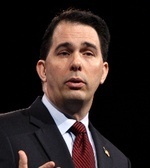 Gage Skidmore
Gage Skidmore Scott Walker
Who is he? Elected governor of Wisconsin in 2010, Walker earned conservative love and liberal hate for his anti-union policies. In 2013, he defeated a recall effort, and he won reelection the following year.
Is he running? Almost certainly.
Who wants him to run? Walker's record as governor of Wisconsin excites many Republicans. He's got a solid résumé as a small-government conservative. His social-conservative credentials are also strong, but without the culture-warrior baggage that sometimes brings. And Walker has won three difficult elections in a blue-ish state.
Can he win the nomination? No one knows. For all his strengths, Walker has never run a national campaign and isn't exactly Mr. Personality. But Jeb Bush's emergence seems to have helped Walker, propelling him to the front of the pack as a more conservative alternative to Bush. He's now solidly in the top tier of candidates.
When will he announce? July 13, perhaps. He’s waiting until after the June 30 deadline for the Wisconsin state budget.
What else do we know? Barack Obama took a shot on April 7 at Walker for his criticism of a nuclear-deal framework with Iran. That's a sign that he's becoming a power player, and sniping from the White House is only likely to elevate Walker's standing with Republicans. Good news, bad news: Walker has a geographic advantage in his proximity to Iowa, but a potential biological disadvantage from his allergy to dogs.
 Gage Skidmore
Gage Skidmore Sarah Palin
Who is she? If you have to ask now, you must not have been around in 2008. That’s when John McCain selected the then-unknown Alaska governor as his running mate. After the ticket lost, she resigned her term early and became a television personality.
Is she running? A bizarre speech in January made a compelling case both ways.
Who wants her to run? Palin still has diehard grassroots fans, but there are fewer than ever.
Can she win the nomination? No.
When will she announce? It doesn't matter.
 Gage Skidmore
Gage Skidmore Mitt Romney
Who is he? The Republican nominee in 2012 was also governor of Massachusetts and a successful businessman.
Is he running? Nah. He announced in late January that he would step aside.
Who wanted him to run? Former staffers; prominent Mormons; Hillary Clinton's team. Romney polled well, but it's hard to tell what his base would have been. Republican voters weren't exactly ecstatic about him in 2012, and that was before he ran a listless, unsuccessful campaign. Party leaders and past donors were skeptical at best of a third try.
Could he have won the nomination? He proved the answer was yes, but it didn't seem likely to happen again.
 Gage Skidmore John Bolton
Gage Skidmore John Bolton Who is he? A strident critic of the UN and leading hawk, he was George W. Bush’s ambassador to the UN for 17 months.
Is he running? Nope. After announcing his announcement, in the style of the big-time candidates, he posted on Facebook that he wasn’t running.
Who wanted him to run? Even among super-hawks, he didn’t seem to be a popular pick, likely because he had no political experience.
Could he have won the nomination? They say anything is possible in politics, but this would test the rule. A likelier outcome could be a plum foreign-policy role in a hawkish GOP presidency.
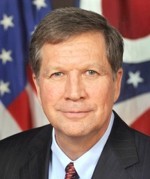 Wikimedia
Wikimedia John Kasich
Who is he? The current Ohio governor ran once before, in 2000, after a stint as Republican budget guru in the House. Between then and his election in 2010, he worked at Lehman Brothers. Molly Ball wrote the definitive profile in April.
Is he running? Almost certainly. He has visited early states, laid out ideas, and established a PAC.
Who wants him to run? Kasich’s pitch: He’s got better fiscal-conservative bona fides than any other candidate in the race, he’s proven he can win blue-collar voters, and he’s won twice in a crucial swing state. While his polling isn’t stellar, he still leads Graham, Fiorina, and Jindal.
Can he win the nomination? As Ball noted, Kasich seems in some ways perfectly suited to this race; in other ways, his insistent anti-charisma makes it hard to imagine him winning, and his attitude is amusingly blasé: “If they like it, great. If they don’t like it, I’ll play more golf.” He could be hurt by his embrace of Medicaid expansion under Obamacare, a move he had to circumvent the Republican-led General Assembly to make.
When will he announce? After June 30.
What else do we know? He doesn’t own a smartphone, and seldom uses a computer. Maybe he can be friends with Lindsey Graham—the old way, via U.S. Mail.
Others Still in the Mix:
Bob Ehrlich, Peter King, Harold Stassen, Jim Gilmore
* * *
The Democrats Wikimedia
Wikimedia Hillary Clinton
Who is she? As if we have to tell you, but: She’s a trained attorney; former secretary of State in the Obama administration; former senator from New York; and former first lady.
Is she running? Yes.
Who wants her to run? Most of the Democratic Party.
Can she win the nomination? Duh.
What else do we know? Maybe a better question, after so many years with Clinton on the national scene, is what we don't know. Here are 10 central questions to ask about the Hillary Clinton campaign.
Does her website have a good 404 page? If you’re tolerant of bad puns and ’90s ’80soutfits, the answer is yes.
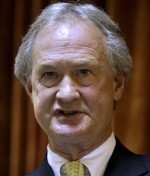 Steven Senne / AP
Steven Senne / AP Lincoln Chafee
Who is he? The son of beloved Rhode Island politician John Chafee, Linc took his late father’s seat in the U.S. Senate, serving as a Republican. He was governor, first as an independent and then as a Democrat.
Is he running? Yes—he announced his run at George Mason University on June 3.
Who wants him to run? Beyond metric-system boosters? No one knows! Even in Rhode Island, Chafee doesn’t have much support—he opted not to seek reelection as governor in 2014, in part because his approval rating had reached a dismal 26 percent.
Can he win the nomination? No. Chafee seems to be positioning himself as an economic populist and says Clinton's 2002 vote for the Iraq war should disqualify her (he was the only Republican senator to vote against it). In other words: He's Jim Webb with a less impressive resume, a less compelling bio (he's the son of longtime Senator John Chafee), and less of a political base. He gives himself even odds, though.
Does his website have a good 404 page? No.
 Wikimedia
Wikimedia Martin O'Malley
Who is he? He’s a former governor of Maryland and mayor of Baltimore.
Is he running? Yes. He announced his campaign on May 30.
Who wants him to run? Not clear. He has some of the leftism of Bernie Sanders or Elizabeth Warren, but without the same grassroots excitement.
Can he win the nomination? At the moment, O’Malley seems caught between Sanders, who has grasped the progressive mantle, and Clinton, who dominates the Democratic race overall. As with Sanders, though, it’s hard to see where O'Malley would get an opening unless Clinton’s campaign fell apart. The conventional wisdom since protests over the death of Freddie Gray is that protests in Baltimore undermine the case for his candidacy and make it harder for him to run, but he’s embraced the protests as a motivation for his run.
What else do we know? Have you heard that he plays in a Celtic rock band? You have? Oh.
Does his website have a good 404 page? No.
 Wikimedia
Wikimedia Bernie Sanders
Who is he? A self-professed socialist, Sanders represented Vermont in the U.S. House from 1991 to 2007, when he won a seat in the Senate.
Is he running? Yes. He announced April 30.
Who wants him to run? Far-left Democrats; socialists; Brooklyn-accent aficionados.
Can he win the nomination? It remains extremely difficult to see him winning the nomination, on the basis that primary voters tend to gravitate to “electable” general-election candidates alone. But he’s proven an ability to poll well into double digits, and he has a fired-up grassroots base. If nothing else, his campaign seems to be succeeding in getting his progressive ideas into the mix.
Does his website have a good 404 page? Yes, and it is quintessentially Sanders.
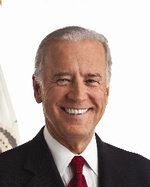 Wikimedia
Wikimedia Joe Biden
Who is he? Biden, a longtime Delaware senator, is vice president and foremost American advocate for aviator sunglasses and passenger rail.
Is he running? He won't rule it out, but he's made no serious steps toward a run.
Who wants him to run? Joe Biden, maybe. The group Draft Biden (slogan: “I’m Ridin’ With Biden”) continues to do its best.
Can he win the nomination? If Clinton didn't run, it would throw the Democratic field into disarray. But probably not.
When will he announce? It seems ever more likely that he won't.
 Wikimedia
Wikimedia Jim Webb
Who is he? Webb is a Vietnam war hero and secretary of the Navy. The author of several books, he served as a senator from Virginia from 2007 to 2013.
Is he running? He has launched an exploratory committee. In mid-June, he said he’d make a final decision within two weeks—so any day now.
Who wants him to run? Dovish Democrats; socially conservative, economically populist Democrats; the Anybody-But-Hillary camp.
Can he win the nomination? Probably not.
Does his website have a good 404 page? No.
 Wikimedia
Wikimedia Elizabeth Warren
Who is she? Warren has taken an improbable path from Oklahoma, to Harvard Law School, to progressive heartthrob, to Massachusetts senator.
Is she running? No. Seriously, no.
Who wants her to run? Progressive Democrats; economic populists, disaffected Obamans, disaffected Bushites.
Can she win the nomination? No, because she's not running.









Forgetting Afghanistan

Since publishing a book on America’s age of unwinnable conflicts a couple of weeks ago, I’ve been asked hundreds of questions about topics ranging from ISIS to Ukraine, from the military-industrial complex to reinstating the draft.
But I can’t recall a single person asking me about the war in Afghanistan.
This is surprising given that the U.S. military campaign in Afghanistan is not only ongoing, but has cost nearly 2,500 American lives and hundreds of billions of dollars, is teetering somewhere between stalemate and loss, and represents the latest chapter in America’s saga of intractable conflicts.
It seems as if Americans have signed onto a pact of forgetting: a collective effort to expunge all memory of the war in Afghanistan.
Afghanistan was once the good war. Seeking righteous vengeance for 9/11, nearly 90 percent of the American public initially backed a crusade to topple the Taliban regime in Kabul and purge the country of al-Qaeda. For years, Barack Obama described Afghanistan as the center of gravity in the struggle against international terrorism. In 2009, Obama surged U.S. forces in Afghanistan to nearly 100,000 troops. With money no object, U.S. officials tried to win over Afghans through initiatives like an Afghan version of Sesame Street called Sesame Garden (unfortunately, the Count character had to be cut because Afghan kids weren’t familiar with Dracula and were confused by his fangs).
Related Story
Why Has America Stopped Winning Wars?
And then the good war turned bad. Obama became disillusioned with the lack of progress in Afghanistan and looked for the quickest possible exit. By 2011, then-Secretary of Defense Robert Gates had concluded that for Obama, “it’s all about getting out.” The president’s exhaustion mirrored the national mood. After a decade and a half of conflict, the public has moved beyond war weariness into a kind of numbing amnesia.
Americans, it seems, have agreed to a pact of forgetting. The term dates back to the death of Spanish dictator Francisco Franco in the 1970s, when Spaniards decided the best way to transition to democracy was el pacto del olvido, or a covenant to disremember the wounds of civil war and autocracy.
Americans are similarly blocking out the painful experience in Afghanistan. It takes a concerted effort—whether conscious or subconscious—to not think about a war where thousands of fellow citizens have died. Granted, the erasure is incomplete. The war flickers at the edges of people’s consciousness. But the mind rebels against giving the conflict any serious contemplation. Raising the topic of Afghanistan these days is like mentioning mortality. There’s a profound desire to change the subject. The popular narrative was once about saving Afghans. Now the focus is on getting American soldiers home, and Afghans have disappeared from the story.
Opinion polls suggest that public support for the war dropped to record lows in 2013. And revealingly, there have barely been any polls on Afghanistan in 2015. The media has also turned away from the war. To pick on the paper of record, the number of New York Times articles mentioning “Afghanistan” roughly halved during the first five months of 2015 compared with the same period in 2012.
Americans are instead debating whether to start a full-scale war against ISIS, a Wahhabi Islamist insurgent group in a strategic region bordering Iran. Few seem to have noticed that the United States is already at war with a Wahhabi Islamist insurgent group in a strategic region bordering Iran: the Taliban in Afghanistan.
Mentioning Afghanistan these days is like mentioning mortality. There’s a profound desire to change the subject.Difficult wars often end in a pact of forgetting. When Saigon fell to Communist forces in 1975, journalist Martha Gellhorn said, “consensual amnesia was the American reaction, an almost instant reaction, to the Vietnam War.” In part, forgetting Vietnam was a subconscious effort to avoid pain. But it was also a very deliberate attempt to cast off the war. The U.S. Army actually destroyed its notes on counterinsurgency in a bid to consign the whole experience to oblivion.
In the case of Afghanistan, the lurch from fervor to amnesia has created a mismatch between U.S. interests and enthusiasm. America’s core goals in Afghanistan haven’t changed much over time: stopping international terrorists from using the country as a base and avoiding the destabilization of neighboring Pakistan. The American commitment to the campaign, however, has risen and crashed like a wave.
During Obama’s first term, the scale of U.S. military intervention in Afghanistan arguably outweighed American interests. Troop reinforcements were necessary in 2009 to check the Taliban’s advance. But the administration’s rapid tripling of U.S. forces was out of step with the limited nature of the president’s key objectives in the country. The White House deployed 100,000 troops in a country where perhaps fewer than 100 al-Qaeda members remained.
But now that this wave of U.S. commitment has dissipated, Americans face the opposite danger: forgetting the war and resisting the fairly modest investment in aid to Afghanistan that could make a meaningful difference in the outcome of the conflict. The United States and its allies, for instance, have promised to fund Afghan security forces through 2017—a commitment that should be extended until the end of the decade. The cost of doing so, roughly $5 billion per year, is a small fraction of the $100 billion that the United States poured into Afghanistan in 2011. There are currently 10,000 U.S. troops in Afghanistan on a training and counterterrorism mission. Obama has promised to remove them by the end of 2016—a date seemingly chosen so the president can say he concluded the war before leaving office. It would be better for a few thousand troops to remain and train Afghans after 2016, even if it complicates Obama’s preferred narrative. Without such investment, what are the prospects for Ashraf Ghani and Abdullah Abdullah’s experiment in unified government in Kabul? Can the Afghan security forces survive record casualties?
Amnesia can be an effective coping strategy. Nietzsche said it was useful “to close the doors and windows of consciousness for a time.” Putting difficult events out of mind is “like a doorkeeper, a preserver of psychic order, repose, and etiquette.”
But expunging a negative experience of war may prevent an open and honest debate about how to salvage the campaign—and absorb its lessons before committing the same mistakes again. We forget so we can ease the pain. But the pain is how we learn.









Hannibal Is Dead, Long Live Hannibal?

The death of a television show used to be a simple affair: Networks would gather at the end of the season, evaluate ratings and budgets, and decide which shows would come back in the fall. With rare exceptions, that decision was final, because with so few networks producing original programming, most axed shows had no other options. But when NBC announced the cancellation of Hannibal on June 22nd after the third season was barely three episodes in, it was hard for fans to know if they should even bother to mourn it. With so many basic cable and online streaming networks hungry to house established original shows, the life cycle of the marginal cult TV hit is growing longer and longer.
Hannibal’s cancellation may stick: Because different companies own the rights to different Thomas Harris books in the Hannibal Lecter series it’s based on, it was questionable whether the show was going to be able to adapt The Silence of the Lambs for its fourth season, which would be the next logical step in its timeline. While the show’s creator Bryan Fuller has promised creative workarounds regardless of the situation, the uncertainty might deter other networks from picking it up. Nonetheless, Hannibal’s production company, Gaumont TV, is shopping it around for a new home, and critics are speculating that NBC made the announcement early in order to give it more time to find one. The show’s ratings on NBC were too small to keep it alive on a major network, but its fanatical viewers might be incentive enough for a smaller one. As has been proven by the resurrection of shows as varied as The Killing, Community, and Arrested Development in recent years, if there’s one thing smaller networks value as much as ratings, it’s an established fanbase.
Related Story
The Cancellation Bear Is the Grim Reaper of TV Ratings
In TV’s earlier days, fans alone could be enough to convince a big network to keep a show. In 1968, the second season of NBC’s Star Trek had fairly middling ratings, and the show’s production costs were high enough that its future was seen as being in doubt. A letter-writing campaign from viewers targeted NBC’s offices for months, sending more than 116,000 pieces of mail and convincing the network to keep it for a third season with a reduced budget—after which it was canceled, as ratings declined further in its Friday night timeslot.
In 2006, the same old-fashioned trick worked again: CBS un-canceled the post-apocalyptic drama Jericho after fans sent 20 tons of nuts to the network’s offices (in reference to a crucial plot point). The show returned for a second season, but once again its ratings failed to improve, and it ended up in the same “canceled too soon” graveyard occupied by so many cult favorites (Joss Whedon’s Firefly, Paul Feig’s Freaks and Geeks, and Winnie Holzman’s My So-Called Life among them). Another member of that family was Emmy-winning comedy Arrested Development, which lasted three seasons (two of them abbreviated) on Fox, mostly because of critical support, before finally getting the axe.
But Arrested Development lived on as a fan favorite, first on DVD, and then on Netflix, where its serialized narrative was far easier to appreciate. Fox couldn’t make the show work in its structured programming blocks, but Netflix saw the opportunity to tap into the show’s growing core of supporters, and revived it for a fourth season in 2011, with a fifth—featuring 17 episodes—now in the works. Netflix and its streaming competitors don’t release their ratings figures, but they’re almost beside the point. What Netflix, Hulu, Amazon Prime, and their competitors care about is subscribers, and the easiest way to pull new paying customers in is to offer them something familiar.
That was Yahoo’s thinking when it decided to bring the NBC sitcom Community back from the dead last year. The show had long struggled to keep its head above water on network TV, weathering cast departures and the firing (and re-hiring) of its creator Dan Harmon. After its well-received but little-watched fifth season, even Harmon seemed comfortable with the idea of letting go, noting as much in a blog post. But still, it came back, valued by Yahoo for an audience that could help the show trend on Twitter, if not make major waves in Thursday night viewership.
That’s what Hannibal has working in its favor: devotees who might not count for much in NBC’s Nielsen ratings, but who have much greater impact online. That’s why the change.org petition pleading for the show’s renewal isn’t just addressed to NBC, but also to Netflix and other online networks. Any quantifiable demonstration of viewer passion, no matter how pleading, looks good, and Netflix has apparently been inundated with calls on the matter. Pity the poor phone operators at the streaming networks, to be sure, but as Star Trek fans knew in 1968, sometimes the simplest methods are the best.









The Star-Spangled Banner in South Carolina

The controversy over the flying of the Confederate flag at the South Carolina state capitol begins with secession. That history winds from the first raising of the Confederate flag to the Charleston massacre. While defenders of the Confederate flag exalt it as an emblem of regional “heritage,” it was designed as the ensign of a slaveholders’ republic, revived a century later as the symbol of massive resistance to civil rights, and became an iconic code for the Republicans’ Southern strategy.
“We stood on the balcony to see our Confederate flag go up. Roars of cannon, &c&c,” wrote Mary Chesnut in her diary on March 5, 1861. It was the day after Abraham Lincoln’s inauguration in Washington. Jefferson Davis, the Confederate president, chivalrously gave the honor of raising the flag for the first time to a figure of exalted Southern womanhood, Letitia Christian Tyler. She was the granddaughter of former President John Tyler of Virginia, himself a supporter of the Confederate cause. “My heart beat with wild joy and excitement,” Tyler later recalled in Confederate Veteran. The band played “Massa Is Buried in the Cold, Cold Ground.”
Mary was the wife of James Chesnut, a slaveholder from South Carolina just appointed the Confederate Secretary of the Navy. She recorded the intimate life of the Confederacy’s inner circle in her diary. She was in Montgomery for the swearing in of the new government. The day before, after socializing with members of the cabinet, she had walked outside: “So I have seen a negro woman sold—up on the block—at auction … She was a bright mulatto with a pleasant face. She was magnificently gotten up in silks and satins.”
Related Story
The Fight Against Confederate Symbols Spreads
On December 27, 1860, Major Robert Anderson evacuated the U.S. force from Fort Moultrie in Charleston Harbor to Fort Sumter, spiking the guns and cutting down the flagpole. “No other flag but the Stars and Stripes shall ever float from that staff,” he said. Early in the morning on April 14, 1861, James Chesnut gave the order for the first shot to be fired at Fort Sumter. When Anderson surrendered, South Carolina’s Governor Francis W. Pickens, who had introduced the Ordinance of Secession, proclaimed, “I can here say to you it is the first time in the history of this country that the stars and stripes have been humbled. That flag has never before been lowered before any nation on this earth. But today it has been humbled, and humbled before the glorious little State of South Carolina.” “Our flag,” recorded Mary Chesnut, “is flying there.”
Less than a week later, on April 20, Major Anderson appeared at a patriotic rally attended by about 100,000 people in New York City’s Union Square, waving the tattered American flag that had flown over Fort Sumter. “Broadway,” reported the New York Herald, “was almost hidden in a cloud of flaggery.” Anderson toured from city to city, symbolically auctioning the flag for the Union cause.
General William Tecumseh Sherman, marching through South Carolina north to conquer Savannah, captured Charleston on February 18, 1865 “by turning his back on it,” according to Anderson. The first Union soldiers to enter the seat of secession were from the 21st U.S. Colored Troops.
President Lincoln sent orders that Anderson was to lead a delegation to raise “the SAME United States flag” over Fort Sumter that was lowered on the exact date four years earlier. Lincoln approved an entourage including abolitionists William Lloyd Garrison, the Reverend Henry Ward Beecher, and the British antislavery crusader George Thompson. It also included Robert Vesey, whose father Denmark had co-founded Charleston’s Emanuel African Methodist Episcopal Church before leading an abortive slave insurrection. That evening, after the flag-raising ceremony, thousands of newly freed slaves marched about singing “John’s Brown Body” and carried Garrison on their shoulders. They were unaware that Lincoln was being assassinated.
In 1988, Lee Atwater, the tactician of racial politics in a very different Republican Party, gave me a tour of the State House at Columbia, South Carolina. I was there as a reporter for the Washington Post. Standing in the rotunda under the dome he showed off the monumental statute of John C. Calhoun, godfather of secession, and then pointed out the window to the Confederate flag. It had been flying there since 1962, an emblem of resistance to the civil rights movement.
“You start out in 1954 by saying, ‘Nigger, nigger, nigger,’” Atwater had explained to the political scientist Alexanders Lamis back in 1981. “By 1968 you can’t say ‘nigger’—that hurts you, backfires. So you say stuff like, uh, forced busing, states’ rights, and all that stuff, and you’re getting so abstract. Now, you’re talking about cutting taxes …”
Atwater wrote some words in my notebook—“establishment” and “populism”—and explained how he used a racially coded “populism” against the “establishment” of liberal government. This was “populism” as old as Ben Tillman’s Red Shirts militia that violently overthrew Reconstruction and imposed Jim Crow. (A large statue of the racist crusader Tillman, who became governor and senator, is planted in front of the State House.)
“I know how to play it,” he told me, twanging on an air guitar. Soon, he would help win the presidency for George H.W. Bush, turning Willie Horton, a black rapist, into Democratic candidate Michael Dukakis’ “running mate,” as he put it. In 2000, George W. Bush won the decisive South Carolina primary over John McCain partly by defending the flying of the Confederate flag on the grounds of states’ rights.
On June 17, 2015, at the Emanuel A.M.E. Church, 21-year-old Dylann Roof attended a prayer meeting and systematically murdered nine parishioners. “You rape our women and you’re taking over our country,” he explained. “And you have to go.” Four days later, Governor Nikki Haley finally agreed that it was time to lower the Confederate flag over the State House. Now, 150 years after the flag was raised again at Fort Sumter, only the flag of the United States may fly at the South Carolina Capitol.









Why Is Dylann Roof So Worried About Europe?

The racist manifesto attributed to alleged Charleston shooter Dylann Roof made a surprising concession to multiculturalism. “As an American we are taught to accept living in the melting pot, and black and other minorities have just as much right to be here as we do, since we are all immigrants,” it said. But the author wrote that learning what was happening in Europe—“the homeland of White people”—was a key step in his racial awakening. “I saw that the same things were happening in England and France, and in all the other Western European countries. … [I]n many ways the situation is even worse there.”
He never makes clear what “the situation” is, but the language echoes a worry shared by white supremacists in the United States and overseas. As Morris Dees and J. Richard Cohen of the Southern Poverty Law Center (SPLC), which tracks hate groups, wrote in The New York Times on Monday, the author’s apparent concern with the loss of white dominance in America and Europe is a sign of “the growing globalization of white nationalism.” They continued:
When, according to survivors, Mr. Roof told the victims at the prayer meeting that black people were “taking over the country,” he was expressing sentiments that unite white nationalists from the United States and Canada to Europe, Australia and New Zealand. Unlike those of the civil rights era, whose main goal was to maintain Jim Crow in the American South, today’s white supremacists don’t see borders; they see a white tribe under attack by people of color across the globe.
Heidi Beirich, who runs the SPLC’s Intelligence Project, told me she has observed an increase in international contacts among white-supremacist groups in the past few years, as well as a “rising cohesion” in the language they use to express their grievances.
“It’s no longer OK to be an open racist and an anti-Semite,” she said. Instead, many members of these groups have adopted a claim first popularized by Robert Whitaker, an elderly segregationist from South Carolina, who in 2006 posted on his website a warning about “the third world pour[ing] into EVERY white country and ONLY into white countries.” The tract, known as The Mantra, helped promote the term “White Genocide,” which has since become a watchword among white supremacists for immigration and fertility trends that could lead to whites losing their majority status in U.S. and European populations in the coming decades. Beirich said it’s less that there is a coordinated global white-supremacist movement than that the rhetoric its adherents use has congealed around an issue that many “white countries” are perceived to be facing.
Related Story
Why It Matters That The Charleston Attack Was Terrorism
And that rhetoric is distinctly international in scope. Whitaker’s mantra suggests the existence of a double standard, in which whites are denied privileges that others enjoy—“ASIA FOR THE ASIANS, AFRICA FOR THE AFRICANS, WHITE COUNTRIES FOR EVERYBODY.” It claims that only whites are being forced to accept “multiculturalism.” A petition to the White House posted last month, calling on the Obama administration to “stop White Genocide in our country!”, encourages the president to turn to Liberia, of all places, for lessons on racial purity. It quotes approvingly from the Liberian constitution of 1986, which says that “in order to preserve, foster and maintain the positive Liberian culture, values and character, only persons who are Negro or of Negro descent shall qualify by birth or by naturalization to be citizens of Liberia.”
A group called the White Genocide Project, which drew notice earlier this year for posting billboards in Alabama displaying Mantra quotes such as “Anti-racist is a code word for anti-White,” cites international law to establish the existence of white genocide, specifically Article II, subsection (c) of the United Nations Genocide Convention. The definition of genocide offered there includes “deliberately inflicting on the group”—which can be a “national, ethnical, racial or religious group”—“conditions of life calculated to bring about its physical destruction in whole or in part.” Under that definition, the White Genocide Project’s website states that a “combination of mass immigration (of different groups of people) plus forced assimilation would qualify as genocide.” The authors compare the trend to Han Chinese migration into Tibet—which Tibetans have complained dilutes their culture—with the only difference being that “White Genocide is taking place across many countries, and it is being done to the majority, rather than a minority.”
The manifesto attributed to Roof never invokes the phrase “white genocide” in connection with “the situation” in Europe that concerns the author, though it addresses many of the themes associated with the term. There is also a parallel, but distinct, narrative of “white genocide” surrounding Rhodesia, the former white-supremacist state that is now Zimbabwe, and South Africa. A widely circulated Facebook photo shows Roof wearing a jacket decorated with flags of those countries, in each of which a black majority brought an end to white-minority rule. The website registered in Roof’s name, where the manifesto appears, is lastrhodesian.com. Beirich told me that invoking the plight of the white minorities in those countries is “another sort of meme on the radical right that’s becoming very common,” offering a vision of the apocalyptic future that could befall whites who lose power.
It’s less that there is a coordinated global white-supremacist movement than that the rhetoric its adherents use has congealed around the idea of “white genocide.”But Roof’s purported manifesto doesn’t concern itself with violence against whites in South Africa, citing the country only as evidence that “it is far from being too late for America or Europe. I believe that even if we made up only 30 percent of the population we could take it back completely.” He doesn’t mention Rhodesia or Zimbabwe at all, instead focusing on black-on-white violence in America.
The manifesto also doesn’t mention the economic desperation and actual persecution that tends to motivate migration from poor countries to wealthier ones. It doesn’t mention that the UN’s Genocide Convention clearly defines the act of genocide as involving the intent to destroy a population. It doesn’t mention that ethnic and racial wealth disparities overwhelmingly favor whites in the United States and Europe, or the crimes perpetrated against millions of black people by white rulers in Rhodesia and South Africa.
What’s notable about the manifesto’s meditation on white victimhood, and the spread of the paradigm and its vocabulary of self-defense, is their power to motivate violence, even as white-nationalist leaders insist they condone nothing of the kind. Roughly half of the “lone-wolf” terrorist attacks in the United States since 1970 have been carried out by white supremacists, often by individuals operating at the fringe of the movement, according to a recent study by Mark Pitcavage of the Anti-Defamation League. It’s a phenomenon that’s not confined to South Carolina, where The Mantra originated. Similar language appears in the manifesto of Norwegian terrorist Anders Breivik, who repeatedly referred to Islam’s “genocidal” campaign against European civilization by way of explaining why he killed 77 people during a 2011 rampage. Such ideas are transcending borders, yet their interpretation is often atomized. Increasing contacts among white supremacists in Europe and the United States hardly constitute a unified international movement of white resistance. But as both the European and U.S. experience demonstrates, lone wolves can wreak enormous destruction all by themselves.









June 23, 2015
In Defense of Pocahontas: Disney's Most Radical Heroine

In 1938, Walt Disney released the first-ever feature-length animated movie, a project that had been labeled “Disney’s folly” thanks to the industry’s belief that its outsized ambitions would prove catastrophic. Instead, Snow White and the Seven Dwarves became the most successful film of the year, grossing $8 million and launching a new cultural phenomenon into the world: the Disney princess.
Related Story
It's Not Just Frozen: Most Disney Movies Are Pro-Gay
Snow White may have blazed a trail for animation, but it took a while for Disney to acknowledge the potential for anchoring ambitious projects around female characters. It was 12 years before the studio would base another full-length picture on a heroine with the release of Cinderella in 1950. Beauty and the Beast (1991) came more than half a century after Snow White scored Disney seven miniature honorary Oscars at the 1939 Academy Awards, but it was only the sixth Disney film out of 32 to focus primarily on the story of a female character. However it was also a colossal hit, grossing $425 million on a $25 million budget, and the movie’s success inspired the studio to look for another ambitious romance with a bold and compelling heroine. The result was Pocahontas, a dramatic retelling of one of the earliest American stories about a Native American woman and her encounter with an English sailor named John Smith.
When Pocahontas was released on June 23, 1995, the criticism it received for taking historical liberties with Pocahontas’s age and relationship with Smith largely overshadowed the fact that Disney had, for the first time, based an entire picture around an adult female, let alone a woman of color. It was also the first time the studio had produced a film about a real person. The movie might have fudged some facts to allow for a compelling romantic story, but it had a progressive attitude when it came to interpreting history, depicting the English settlers as plunderers searching for non-existent gold who were intent upon murdering the “savages” they encountered in the process.
The film also seemed to embrace an environmentalist message, with Pocahontas showing Smith the absurdity of relentlessly taking things from the Earth instead of seeing its potential. It was a radical story about female agency and empathy disguised as a rather sappy romance, and amid the controversy that arose at the time thanks to the subject matter, many of the film’s best qualities have been forgotten. But 20 years later, its impact can be seen in the new wave of animated Disney films like Brave and Frozen, while Pocahontas itself remains a graceful and well-conceived entry in the Disney canon.
* * *
Prior to the The Little Mermaid’s release in 1989, the ‘70s and ‘80s were lean times for Disney. The two decades before had seen some of the studio’s most iconic pictures, but films like The Many Adventures of Winnie the Pooh (1977) and The Fox and the Hound (1981) were forgettable, while 1985’s The Black Cauldron was a box-office bomb. From 1961 through 1988, Walt Disney Studios largely focused on stories about talking animals, from The Rescuers (1977) to The Great Mouse Detective (1986), as well as Robin Hood (1973), which reinvented the archetypal English characters as anthropomorphized foxes and bears. In 1984, Roy E. Disney, Walt’s nephew, launched a campaign called “SaveDisney” in which he argued that the studio was losing its magic. After the catastrophic release of The Black Cauldron, Roy Disney was put in charge of Disney’s animation department in 1985, and he helped spearhead the company’s creative and financial renaissance of the 1990s.
The Little Mermaid, the 1989 story of a princess named Ariel who falls in love with a human and decides to trade her voice for the ability to live on land, was a film very much in the old Disney mold—a romantic fairytale with child-friendly humor and compelling supporting characters. 1991’s Beauty and the Beast trod similar ground, while 1994’s The Lion King was an animal story given a more epic scope, with the Africa tundra framed as a kingdom and the cub Simba depicted as a young Prince Hamlet whose father had been murdered by his uncle.
Pocahontas was something different entirely. The success of Beauty and the Beast spurred studio chairman Jeffrey Katzenberg to push for another romance, and directors Mike Gabriel and Eric Goldberg wanted to pursue a story that had its origins in early American history, while also incorporating the Romeo and Juliet-esque elements of two people from very different backgrounds falling in love. But unlike the naive and uncertain Ariel and Belle, Pocahontas would be far more confident—“a woman instead of a teenager,” as supervising animator Glen Keane put it. As the producer Jim Pentacost says in Disney’s 1995 documentary about the making of the feature, “Pocahontas is the strongest heroine we’ve ever had in a Disney film.”
“Pocahontas is the strongest heroine we’ve ever had in a Disney film.”The main problem with Pocahontas—as expressed by several Native American groups, including the Powhatan Nation, which traces its origins back to Pocahontas herself—is that over time, she’s come to embody the trope of the “Good Indian,” or one who offers her own life to help save a white settler. “Her offer of sacrifice, her curvaceous figure, and her virginal stature have come to symbolize America’s Indian heroine,” wrote Angela Aleiss in an op-ed in The Los Angeles Times. Aleiss goes on to criticize how female Indian characters are defined by their male relationships, are “tossed aside by the white man” for a woman of his own race, and have nothing in their appeal beyond their “on-screen pulchritude.”
But Pocahontas as a character is much more complex than Aleiss allows. She does throw herself on John Smith as he’s about to be executed, emphasizing the value of human life and the destructive nature of war, but her move is reciprocated minutes later, when Smith then positions himself between Pocahontas’s father and the furious head of the English settlers, Governor Ratcliffe, and gets shot in the process. The injured Smith decides to return home, and begs Pocahontas to go with him, but she chooses to stay with her tribe in her homeland. Instead of sacrificing something for love (like Ariel giving up her voice, or Belle her freedom), Pocahontas puts her identity and heritage first. It’s a bold ending, and one that deliberately subverts real history, which saw the real Pocahontas marry a different Englishman, John Rolfe, and travel to London with him, where she was feted as an example of the “civilized savage” before dying at the age of 21 shortly before her husband was due to sail back to Virginia.
Powhatan Nation has a page on its website in which it also criticizes Disney for propagating the “Good Indian/Bad Indian” theme and basing a movie on what is largely believed to be a lie told by John Smith to enhance his own mystique. “Euro-Americans must ask themselves why it has been so important to elevate Smith’s fibbing to status as a national myth worthy of being recycled again by Disney,” the page says. “Disney even improves upon it by changing Pocahontas from a little girl into a young woman.” But an animated feature about the relationship between a 10-year-old (as Pocahontas is believed to have been at the time she met John Smith) and an adult male would presumably have horrified audiences. “We had the choice of being historically accurate or socially responsible,” Glen Keane said.
“This is also the first time ... that a human face has been put on an Indian female.”The animator Tom Sito has written about the efforts the creative team went to to try and accurately portray Native American culture, saying, “Contrary to the popular verdict that we ignored history on the film, we tried hard to be historically correct and to accurately portray the culture of the Virginia Algonquins. We consulted with the Smithsonian Institution, a number of Native American experts, Pocahontas’s descendants, the surviving Virginia tribes, and even took several trips to Jamestown itself.” The lyricist, Stephen Schwartz (best-known for his Broadway smash, Wicked!) also traveled to Jamestown to research Native American music and history while working on the movie’s songs.
When asked about whether he thought the movie accurately portrayed history, the Native American actor Russell Means, who gave his voice to Pocahontas’s father, said he was shocked by how revolutionary the plot was: “The Eurocentric males are admitting why they came here—to kill Indians and to rob and pillage. That’s never been done before. This is also the first time, other than on Northern Exposure, that a human face has been put on an Indian female.”
* * *
While its interpretation of history attracted considerable criticism, less was written about the fact that Disney had, for the first time, provided an independent and fearless heroine with a strong sense of self. Pocahontas, whose marriage has been arranged by her father to a warrior named Kocoum, expresses doubt that he’ll be a good match for her, stating that he’s “so … serious.” She seeks guidance from her elders, but also knows herself well enough to intuit that she’s too unconventional for such a husband. Compared to Belle, who’s imprisoned by the Beast before eventually seeing his good side, or Ariel, who falls in love with Prince Eric at first sight, or Cinderella and Aurora and Snow White, all of whom seem to accept that their marriages are pre-ordained, Pocahontas has a remarkable amount of acuity when it comes to choosing a romantic partner—to the point where she’s able to let him go rather than sacrifice her happiness.
Disney had, for the first time, provided an independent and fearless heroine with a strong sense of self.Her strength and bravery are traits that Disney also gave to the character of Mulan, who disguises herself as a man so that she can go to war in place of her elderly father. But after the release of that movie in 1998, Disney wouldn’t produce a movie about a female hero until 2009’s The Princess and the Frog, the success of which spurred a new series of stories about gutsy heroines: 2010’s Tangled, 2012’s Brave, and 2013’s Frozen, which took over a billion dollars at the box office and became the highest-grossing animated film of all time.
It’s maybe overstating things to say that there would be no Elsa or Rapunzel or Merida without Pocahontas, but to overlook her status as the first truly empowered Disney heroine is to miss a real turning point for female characters in the 20th century. In an essay for Highbrow Magazine, Kaitlin Ebersol aligns the phases of Disney heroines with the various waves of feminism in the 20th century and beyond. “By the 1990s, a third wave of feminism, which dealt specifically with feminine sexuality, had arisen in response to failures of the second wave,” she writes. “The third wave began destabilizing former contracts of body, gender, and sexuality, and encouraged every woman to define felinity, beauty, and orientation for herself ... These newer princesses reflected society’s drastically altered beliefs about who women are and how they should act.”
Not only was Pocahontas a radical reimagining of the Disney heroine, the movie she starred in was itself attempting to both re-explore history and to encourage empathy as a guiding quality for young viewers. If The Lion King was its generation’s Bambi when it comes to thinking about the treatment of animals, Means has said, “Pocahontas teaches that pigmentation and bone structure have no place in human relations. It’s the finest feature film on American Indians Hollywood has turned out.”









How James Horner Moved Filmgoers

Before it was one of the best-selling singles of all time and an Oscar-winning flashpoint in an eternal cultural battle over schmaltz, “My Heart Will Go On” was a secret. During Titanic’s filming, its director, James Cameron, “was opposed to composer James Horner’s desire for a closing pop ballad, thinking it at odds with the score’s attempt at period authenticity,” wrote Carl Wilson for The Atlantic in 2012. “So Horner pursued it behind Cameron’s back. He solicited lyrics from his friend Will Jennings, and set his sights on [Celine] Dion. She hated the song at first herself, but her husband/manager Rene Angelil persuaded her to sing on the demo (literally weeping while doing it, by some accounts), which in turn convinced Cameron.”
Related Story
Seeing Titanic With Fresh Eyes
Horner, who died at age 61 on Monday in a plane crash, was among the most prolific name-brand composers working in Hollywood, racking up 10 Oscar nominations and dozens of huge film credits—Braveheart, Apollo 13, Field of Dreams, Aliens, and Avatar among them. But Titanic, the second-most popular film score of all time, stands somewhat above the rest in terms of its cultural impact and awareness, for better and for worse. The “worse” part probably needs no explanation: Both film and music experienced waves of critical and popular backlash for their overt sentimentality. “Teen-age Titanic fans may not swoon for long to this music once they’ve taken it home,” wrote Alex Ross, The New Yorker’s classical-music critic, in March 1998. “Horner, who studied at the Royal College of Music and then graduated to Roger Corman’s B-movie shop, is set to become the biggest phenomenon in the history of used-CD stores.”
The stats on the album’s performance in second-hand record stores weren’t immediately available. But what’s clear is that Titanic’s music hasn’t faded from the popular consciousness in the nearly 20 years since the film’s release, not really. It’s been reissued and rerecorded a number of times. A worldwide tour in which it’s performed live by an orchestra is currently snaking through Europe. And “My Heart Will Go On” sits as the 11th best-selling single of all time, and still gets covered by punk bands, Disney stars, and karaoke warblers. The music’s commercial success may well owe to the over-the-topness that so many people find off-putting about it, a dynamic that speaks to the challenge facing all film composers. Do you serve the screen, or do you serve the music? Do you play the expected and timelessly compelling, or do you challenge filmgoers with the kind of musical accompaniment they hadn’t heard before? Do you hit them in the gut, or the mind?
For the most part, Horner answered the above questions with “both.” Hans Zimmer’s brooding bombast or John Williams’s grand melodies weren’t his style; his scores tended to be more delicate things, rummaging through musical history and diverse cultures while also providing plaintive, pop payoffs. Ross described the “New Age Celtic sound, with cooing pipes and electronic choirs” of some of Horner’s ‘90s output as being incongruous for Titanic’s subject matter, but that’s part of what made it so striking—the way it keyed into the story’s emotions using sounds that weren’t quite expected. He could create strange, otherworldly atmospheres—check the atonal skittering and chimes of the “if you build it” scene in Field of Dreams, or the early tracks for Aliens—but they always gave way to satisfying crescendos.
Horner’s scores tended to be more delicate things, rummaging through musical history and diverse cultures while also providing pop payoffs.His work on Avatar is perhaps the purest distillation of his varying impulses, requiring him to a conjure never-before-heard sounds for what at its core was a classic adventure story. Speaking to The Los Angeles Times in 2009, Horner said he digitally manipulated a variety of indigenous instruments to make them sound “alien” and yet “warm.” In that same interview, he talked about his long relationship with James Cameron. “He and I get into tussles sometimes when I think something should be a little bit more human or heartfelt and he thinks it’s not necessary,” he said. “I’ll write a cue two different ways just to cover myself. Sometimes he will use the drier way and then, a month later, he’ll swap out the cue for the version I proposed in the first place.”
It’s a fascinating anecdote—one that gets at his faith in the emotional, the same faith that led him to create “My Heart Will Go On” without Cameron’s approval. Regardless of one’s opinions of the song, it’s a cultural landmark; Wilson’s Atlantic article proposed that it may be destined to become a folk standard. Horner probably didn’t have that fate in mind, of course—as befits someone who was scoring multiple films a year, he was just trying to do his job. Last year, he sat down for an interview with David Hocquet of the insanely detailed fan site James Horner Film Music. “Your music will live on in our minds and in our hearts, and apart from the film,” Hocquet told him. Replied Horner: “I mean it's nice to be reminded and I'm very flattered, but I just lose track of all of that. I do my best and then I put it in the mail and hope for the best.”









Confederate Flag, Pop-Culture Phenomenon
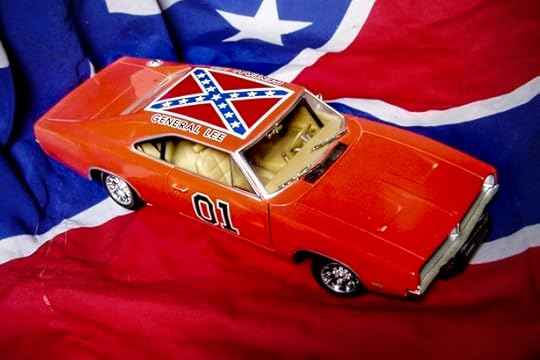
You can, as of now, buy a belt buckle featuring the Confederate flag on Amazon for $13.81. You can also buy, elsewhere on the Internet, a Confederate flag t-shirt. And a necklace. And a shower curtain. And regular curtains. And paper napkins. And a beer koozie. And a beer pong table. And a pocket knife. And a beach towel. And a bikini. And flip-flops. And a baseball cap. And a saddle pad. And a money clip. And a baby onesie. And a lawnmower.
Related Story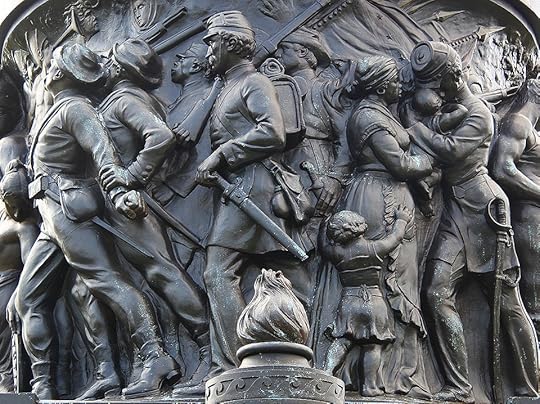
On Monday, Governor Nikki Haley called for the Confederate flag to be taken down from grounds of the South Carolina State House. Politicians tripped over themselves to join her. On the same day, Walmart announced that it would remove Confederate flag merchandise from its stores. So did Sears. So did, on Tuesday, eBay. Which came on the heels of Virginia governor Terry McAuliffe announcing his plans to phase out a state-sponsored license plate featuring an image of the Confederate flag, declaring the image to be “unnecessarily divisive and hurtful.”
And then, Amazon jumped on the bandwagon: The megastore, its spokesperson has confirmed, will at some point in the future pull its Confederate flag-related merchandise.
The speed of all of this movement is astounding—a testament to the fact that the arc of history not only bends toward justice, but occasionally jerks toward it. What the speed belies, however, are the deep structural challenges associated with relegating the flag to, as President Obama suggested, “a museum.” The Confederate flag isn't merely available as merchandise in big-box stores, or in mom-and-pop souvenir shops, or in the many crap-selling corners of the Internet. Its symbolism is also incorporated into the flags of seven—seven—different states. It has appeared in artwork both high and low, and on album covers, and at concerts, and on television, and in movies. It was used in a button for the Clinton-Gore campaign of ‘92. It is the visual embodiment of Americans’ storied capacity to whitewash our own history: of the highways that are named for Jefferson Davis and Robert E. Lee, of the statues of Lee, Davis, and CSA Vice President Alexander Stephens that remain in the U.S. Capitol’s Statuary Hall, of the multiple schools whose names pay tribute to Lee, Davis, and Stonewall Jackson.
Which is all to say that the most prominent flag of the Confederacy has become infused, miasmically, into the culture—a symbol not just of racism and inequality and the banality of evil, but also of a complex tangle of ideas that are, in the end, extremely and essentially American: freedom, rebellion, courage, cowardice, capitulation, camaraderie. We can call the flag “a flag,” for convenience’s sake; what it is more specifically, though, is a meme. And, as tends to happen with memes, the flag doesn’t merely contain multitudes; it also has a way of multiplying. It metastasizes.
Whatever happens in South Carolina, the question from there is: What next? Not just when it comes to Mississippi and Virginia, and but also when it comes to Lynyrd Skynyrd albums and old episodes of The Dukes of Hazzard and the fact that, as of this writing—and despite the company’s statement of future merchandise-yankings—sales of Confederate flags are trending upward on Amazon? How do you deal with a symbol that means so many different things, to so many different people? How do you “take down” a flag that has ceased to be a flag at all?
* * *
This is, for better or for worse, a (relatively) recent conundrum. For a long time after the Civil War, my colleague Yoni Appelbaum notes, the flag largely disappeared as a public symbol, relegated to dusty attics and the even dustier memories of the war’s survivors. It was revived, in fits, in the early 20th century, waved at football games and sold to the nostalgic as ephemera of a bygone era. As that happened, though, the particular meaning of the flag—its segregationist connotations and messages, and all that came with them—was revived. The Ku Klux Klan adopted it. So did the Dixiecrats.
But so did the public more broadly—people who identified themselves not as racists, but as rebels of a broader stripe. By the 1960s, the journalist Keith Coulbourn observed, the flag had become a symbol of “simple rebellion, the degenerate form of any nameless revolt, indeed for any anomic nut with a generalized gripe.” As one Kansas man explained to a reporter: “We fly the rebel flag because it's our belief—to be able to do what you want to do.” (He added, emphatically if redundantly: “We're 100 percent rebel.”) A popular souvenir of the Civil War Centennial, John M. Coski notes in The Confederate Battle Flag: America's Most Embattled Emblem, was a Confederate soldier figurine uttering the lines, “Hell, no, I'll never forget!”
The keepsake rebel was draped in the flag.
Around the time of the Centennial, Coski points out, the flag adopted, in addition to everything else, another strain of symbolism. It came to represent not just the rebel, but also the “good ol’ boy”—the kind of benign strain of Southernness that one might today associate with Jeff Foxworthy’s comedy and Cracker Barrel’s dining establishments. The flag’s historical connection to the Civil War gave way to a broader connection with Southern culture, making the flag, as Coski puts it, “an effective symbol for the fierce independence and individual rebelliousness common to all these types of people.”
“Sweet Home Alabama,” which remains an anthem of Southern whiteness, was released in 1974 (complete with a flag-waving album cover). Tom Petty would unfurl a Confederate flag during shows as he sang the lyrics to 1985’s “Rebels”:
Hey hey hey, I was born a rebel
Down in Dixie
On a Sunday morning
One foot in the grave, one foot on the pedal
I was born a rebel.
The normalizer of the flag in pop culture, however, was The Dukes of Hazzard. The show, Coski notes, which ran from 1979 to 1985—and was followed by several spinoffs, including a 2005 feature film—solidified the flag’s connection with the “good ol’ boy” ethos. The show reached, in the early ‘80s, some 46 million viewers. Its most prominent icon was a 1969 Dodge Charger, the entirety of whose roof was painted with a Confederate flag. The car, which functioned as a co-star in the show, was nicknamed the “General Lee.”
Here is the beginning to the Dukes of Hazzard theme song:
Just a good ol’ boys
Never meanin’ no harm
Beats all you never saw
Been in trouble with the law
Since the day they was born
Staightnin’ the curves
Flatnin’ the hills
Someday the mountain might get ‘em
But the law never will...
Just good ol’ boys never meanin’ no harm. Which implies, of course, that harm is somehow part of the equation to begin with. The pre-emptive defensiveness here is telling: The Dukes of Hazzard solidified the idea that the flag could have—or at least could claim to have—an alternate meaning besides the original one of defiant racism. But the show also made clear how awkward that alternate meaning can be. It suggested the way that a flag, layered onto to the body of a car, can have its own kind of layered meaning.
And the layering continued. The defiance continued. As late as 2005’s feature-filmed reboot of the show, the Confederate flag remained atop the General Lee.
* * *
It’s telling, though, that in a 2014 ad for Autotrader, which found the reunited Duke boys considering trading in the General Lee for a newer model … the flag was missing.
It’s also telling that so many companies that have a commercial interest in selling the flag, in all its forms, have halted those sales.
It’s in those incremental changes that history’s arc will likely, after this period of productive whiplash, go back to bending. If the Confederate flag is to be “removed,” in any comprehensive way, from American infrastructures if not from American memories, the removal will have to contend not just with the flags that fly over state capitols, or with the images stamped onto government-issued license plates. It will also have to contend with Johnny Knoxville, with Lynyrd Skynyrd, with Tom Petty, with Kanye West—with all the flags and non-flags that, while they are no longer available for purchase at Walmart and Sears, remain available across the Internet. It will have to contend with the places that insist, contra history and common sense, that a flag is just a flag. And that history can’t be painful in the present.









The Fight Against Confederate Symbols Spreads

Updated on June 23, 2015 at 3:10 p.m.
The ground seems to be shifting quickly on Confederate emblems—not just in South Carolina, but across the country. In the Palmetto state, both the House and Senate voted in favor of debate on removing the flag of the Army of Northern Virginia from the capitol grounds. The next steps will not likely occur until July. Elsewhere, Virginia Governor Terry McAuliffe announced that—following a Supreme Court ruling last week—the state would cease offering license plates with the flag, while Tennessee Governor Bill Haslam said he supported doing the same. Meanwhile, as sales of Confederate flags surged online, both Amazon and a leading flag maker announced they would follow Walmart, Sears, and other retailers in ceasing to sell Confederate merchandise.
The change in South Carolina politics over the last few days has been nothing short of shocking. The flag of the Army of Northern Virginia seemed firmly ensconced on the grounds of the state capitol in Columbia. Governor Nikki Haley insisted that discussion of the flag’s status was for another day. Senator Lindsey Graham said that while it would be “fine” with him to revisit that decision, it was merely a symbol.
It turns out that symbols matter. On Monday, Haley stood up at a press conference and called for the flag to be removed, insisting that the legislature act immediately. If it didn’t, she would call a special session to address it. She was flanked by Tim Scott, a black Republican senator, and Graham also voiced his support for her move. That followed a call over the weekend for the flag’s removal from Mitt Romney, and the RNC followed Haley’s announcement with an endorsement. Walmart also said Monday that it would quit selling Confederate merchandise.
It isn’t as though the flag only now became a lightning rod, though the massacre of nine black South Carolinians in Charleston clearly shifted the tide. Democratic and even Republican presidential candidates have called for it before—John McCain did so in 2000, though only after losing the state’s primary—and in 2000, state legislators moved the flag from atop the capitol to a site nearby on the grounds. But removing it altogether still seemed too politically difficult in the first state to secede from the union.
Related Story
Even in February 2015, when Public Policy Polling (caveat lector) asked about the flag, half of South Carolinians backed keeping it, with only 40 percent opposed. That despite the fact that nearly half also felt it was bad for the state’s image. (Astonishingly, 35 percent said they thought it was good for the Palmetto State’s reputation.)
It’s still possible that South Carolina legislators could hold a speedy vote and in doing so reject the idea of removing the flag. Given that doing so would require bucking all three statewide elected officials and the national Republican Party, it seems unlikely—though one legislator has already likened Haley’s call to a “Stalinist purge.” (The Charleston Post & Courier is conducting a running whip count here.)
The question for the coming days is this: Is the fury directed at the flag in South Carolina, ignited by the Charleston massacre, contained within the Palmetto State’s borders and subject to local pressure and grief? Or can the righteous anger and arguments directed at that flag work in other states as well?
If it’s the latter, there are many places for it to spread. Elements of either the battle flag or the flag of the Confederate States of America were incorporated into the flags of several other Southern states, most notably Mississippi. Major highways are named for Jefferson Davis and Robert E. Lee. Statues of Lee, Davis, and CSA Vice President Alexander Stephens represent their states in the U.S. Capitol’s Statuary Hall. The database of the National Center for Education Statistics shows at least 20 schools named for Robert E. Lee, and nine apiece for Stonewall Jackson and Jefferson Davis.
In 2011, then-Representative Jesse Jackson Jr. told me about traveling through the South after his election, hoping to better understand American history. He was shocked by what he saw—even as soon as he crossed the border from Washington into Virginia and discovered he was on the Jefferson Davis Highway. “In the South, many states are replete with high schools named after the generals who were some of the great traitors of our country’s history,” he said. “Jefferson Davis has nothing named for him in Washington, and Abraham Lincoln has very little named for him in Virginia.” (Jackson was later convicted of wire and mail fraud and resigned.)
“In the South, many states are replete with high schools named after the generals who were some of the great traitors of our country’s history.”The first, most obvious place for the battle against Confederate symbols to continue would be Mississippi, where the state flag wholly incorporates the battle flag. Evangelical leader Russell Moore, in a widely cited post on Friday, called for its removal from the flag of his native Mississippi. Late Monday, Republican state House Speaker Philip Gunn called for the removal of the Confederate flag. But support for the flag, at least among other white conservatives who dominate government, seems to remain high. Another state legislator delivered a broadside against Romney for his comments about South Carolina. Governor Phil Bryant cited a 2001 referendum in which two-thirds of Mississippians voted down an attempt to remove the Confederate standard from the state flag. "A vast majority of Mississippians voted to keep the state's flag, and I don't believe the Mississippi Legislature will act to supersede the will of the people on this issue," Bryant said in a statement. Recent polling on the flag is sparse, but a 2014 poll found that if the Civil War broke out today, only 50 percent of Mississippians would side with the Union, while nearly 30 percent would secede.
There are plenty of other targets. On Monday, Representative Jim Cooper called on Tennessee to remove a bust of Confederate General Nathan Bedford Forrest from its state capitol. In Texas, more than 1,700 students signed a petition to remove a statute of Jefferson Davis from the grounds of the University of Texas-Austin.
Also Monday, Baltimore County, Maryland, asked the city of Baltimore to join in rechristening a park named for Robert E. Lee. A Confederate monument in the city was vandalized with graffiti reading “Black Lives Matter.” It’s hard to imagine there won’t be similar cases of both political pushes and vigilante action against Confederate monuments in the next few days—in part because the burgeoning national network of civil-rights activists that has coalesced since Ferguson seems to have taken up the flag cause as its own. DeRay Mckesson, one of the most prominent spokesmen of that movement, tweeted a Vine of a Confederate flag burning, and #TakeItDown rallies inspired by Charleston’s are planned.
It’s an interesting and somewhat surprising turn for the activist movement. Until now, post-Ferguson protests have tended to focus on a single, tangible issue: police violence against people of color. As Johnetta Elzie, another high-profile activist, told Jay Caspian Kang: “Our demand is simple: Stop killing us.” The flag is a far more symbolic issue, if still clearly connected to the question of violence against black Americans. There was a gathering sense of unease already on Monday, a worry that the focus on removing the flag might provide a too-easy exit for leaders in South Carolina to declare victory and move on without grappling with deeper, systemic strains of racism in a state where the black poverty rate is nearly three times as high as the white rate; black incarcerations rates are nearly four times as high; black arrest rates are disproportionately high; and black high-school graduation rates lag white rates.
There are reasons to think that the push to get rid of monuments named for Confederates may sputter. The RNC’s statement on South Carolina notably didn’t mention Mississippi, and Republican presidential candidates’ timid tiptoeing around the flag issue in South Carolina doesn’t seem to portend bold demands from them.
“I don't believe the Mississippi Legislature will act to supersede the will of the people on this issue.”That shouldn’t obscure the fact that there are detectable shifts in attitudes toward the Confederacy and other white-supremacist monuments already, in the last decade and a half. One factor is surely the simple passage of time, as connections to the old Confederacy fade, while changing attitudes about race and shifting demographics in the south are two more. In 2013, a Florida high school’s name was changed so it 







Obama Will Get His Trade Deal After All
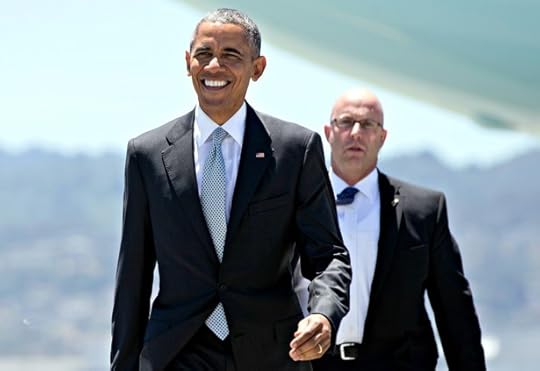
Updated June 23, 2015, 11:43 a.m.
A trade package that appeared all-but-dead earlier this month is now on the verge of passage after the Senate on Tuesday voted to advance a bill giving President Obama “fast-track” authority to negotiate international trade agreements.
On a vote of 60-37, the Senate moved to end debate on Trade Promotion Authority legislation, the core piece of the agenda that Obama has struggled to push through Congress. A final vote to send the bill to the president’s desk is expected on Wednesday.
The breakthrough occurred after House Democrats initially blocked the trade package by voting down a separate piece providing Trade Adjustment Assistance for displaced workers. But Obama and Republican leaders then went around Democrats by splitting off the aid bill—traditionally a sweetener for Democrats—and passing Trade Promotion Authority by itself. To retain the support of pro-trade Democrats, Speaker John Boehner and Senate Majority Leader Mitch McConnell promised to hold a second round of votes on Trade Adjustment Assistance once the fast-track bill passed, when most liberal Democrats would have little incentive to defeat it.
“This has been a long and twisted path to where we are today,” McConnell said after the vote. Trade Promotion Authority will allow Obama to complete a pending agreement with 12 Pacific Rim nations that would be subject only to an up-or-down vote in Congress—without amendments. A second major agreement with the European Union could follow, although that likely won’t be finished during Obama’s presidency.
June 18, 2015, 2:28 p.m.
Shortly before the House voted on Thursday—for the second time in a week—to deliver President Obama the authority he was seeking to negotiate trade agreements abroad, Speaker John Boehner was asked if he had learned anything from the dead-one-moment, alive-the-next legislative battle.
Nope, the speaker replied. “I would describe most of what’s gone on the last three weeks as close to bizarre,” he told reporters. “I don’t think I’ve learned anything from it.”
Related Story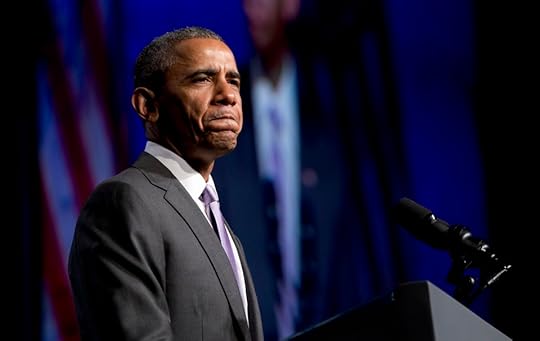
Boehner was certainly correct in the initial part of his reply. Just six days ago, House Democrats overwhelmingly repudiated Obama’s trade agenda by defeating the one part of that package—Trade Adjustment Assistance—that was included to garner their support. Led by Republicans, the House then approved the core piece, “fast-track” Trade Promotion Authority, but because Democrats rejected the aid for displaced workers, the underlying legislation remained stalled. Nancy Pelosi, the president’s loyal partner for six-and-a-half-years, betrayed him on the House floor, and Obama’s top domestic priority was left for dead—or so everyone thought.
The Democratic revolt was surprising enough, but what’s happened since has been equally unusual. Spurned by his friends, Obama responded to the setback not by trying to win them over, but by conspiring with Republicans against them. (Yes, the same Republicans who are simultaneously suing him for abuse of power.) With backing from the administration, the House jettisoned the worker assistance from the trade package and on Thursday, approved Trade Promotion Authority on its own. The vote, 218-208, was nearly identical to the one last week, but now the new bill must go back to the Senate before Obama can sign it.
“I would describe most of what’s gone on the last three weeks as close to bizarre.”To keep pro-trade Democrats on board, the White House and Republican leaders promised them that they would pass Trade Adjustment Assistance, or TAA, separately if they can. How do they hope to do that? By attaching that measure to an even more popular bill—which passed the House and Senate nearly unanimously—that maintains trading preferences for African nations.
In other words, we’ve reached the peak sausage-making phase of the trade fight. It’s oddly reminiscent of the biggest legislative lift of Obama’s first term: healthcare reform. After Scott Brown’s surprise Senate victory in Massachusetts cost Democrats their filibuster-proof majority, then-Speaker Pelosi considered all sorts of legislative machinations—remember “deem and pass”?—to get Obama’s landmark bill to his desk. When she finally turned to the obscure budget maneuver known as reconciliation to finish the job, Republicans cried foul.
This time, the protesters were Democrats. Rosa DeLauro, the Connecticut liberal who has led the fight against trade in the House, denounced the move as “a gimmick,” and she noted ruefully that Obama had ignored his party’s plea for changes to the bill. “The administration,” DeLauro said, “has shown absolutely no interest in improving this deal or even listening to our concerns.” Union leaders complained about “parliamentary trickery” just days after they used similar legislative tactics to defeat the trade bill initially. Pelosi, meanwhile, criticized the legislation but held her tongue on the process. “God knows,” she said, “I know the power of the speaker.”
Obama’s trade agenda may be revived, but it is not yet enacted. The Senate next week must vote again on both TPA and TAA, and the strange Obama-GOP alliance will have to hold on to the same dozen or so Democratic senators that supported the trade bills last month. Once Trade Promotion Authority passes the Senate again and goes to the Oval Office, the House would vote again on Trade Adjustment Assistance, with the assumption that Democrats will have no reason to oppose it if doing so won’t stop fast-track trade authority from becoming law.
It’s confusing, and, yes, bizarre. But contrary to Boehner’s take on the whole ordeal, there might be something to learn after all. Republicans have complained, to the president, the public, and the courts, that when they don’t give Obama what he wants, he simply goes around them. The last week has demonstrated that he’s perfectly happy to go around Democrats, too.









Atlantic Monthly Contributors's Blog
- Atlantic Monthly Contributors's profile
- 1 follower



